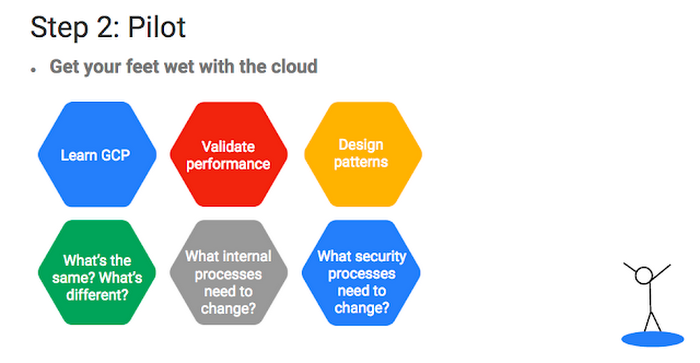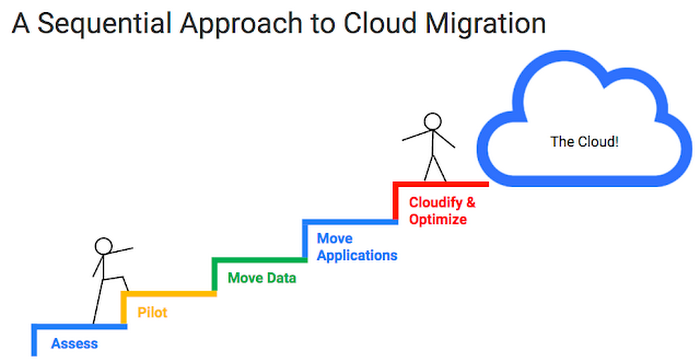Đại dịch vừa qua đã khiến lưu lượng truy cập tổng đài chăm sóc khách…
5 steps to migrate to Google Cloud Platform (GCP)
Shift up Google Cloud Platform It's not difficult at all, but there are many issues to keep in mind. And rest assured it won't happen all at once
In the presentation, “Getting to the Cloud with Google Cloud Platform: a sequential approach” by Google Cloud Solutions Architect Peter-Mark Verwoerd, outlined five steps to plan for workloads to migrate from on-premises environments. to GCP (Google Cloud Platform). These were the focus of that presentation.
Step 1: Evaluation
Before your business begins the first move, compile your applications and consider their suitability for the Cloud. Things to consider include (but are not limited to) hardware and capacity required, users, licensing, procedures to be followed, and application dependencies.
In general, applications will be placed into one of three categories: easily portable, difficult to portable, and non-portable. And according to Google's experience, most of the things that will fall into the easily portable category are greenfield apps, Test, Dev, and Q&A. Internal web applications and automated batch processing applications are good candidates for the Cloud, because they can scale horizontally rather than vertically.
Step 2: Control
This is the moment when you take one or two applications and try to move them to the Cloud. Learn more about Cloud platforms and pre-designed templates, you should take the time to test productivity, consider your licensing options, and plan for cost savings. Don't skip this step and don't try and move too many apps at once.

Step 3: Data migration
There are some opinions that businesses should move applications first and then move data to the Cloud, but Google wants you to do otherwise. Most applications will have a lot of space with many things involved. Therefore, moving data to the Cloud will create a first step to successfully move applications to the Cloud later.
At this time, you also need to consider diverse options for Cloud storage – Cloud Storage Solution usually good Nearline? Local SSDs or persistent Disks? Google Cloud SQL, Datastore or Bigtable? You should think about how you will move all your data – by transferring data packets, importing offline drives, using database dumps (mySQLdump), or online to persistent disks? And there's a lot to consider in this step.
Step 4: Move the application
With your data in the Cloud, you're ready to bring your applications to the Cloud. And of course, you will need to make some decisions. Google advises users to keep things simple, and use the minimum necessary to get the application up and running in the Cloud, for example doing Lift-and-shift directly. Or maybe you can bring an application to the Cloud by backing it up on the Cloud? That way in case of a crash or error, there will still be a copy of your application on GCP.
Step 5: Optimize
This will be the step where fun things happen. Once your application and data have been migrated to GCP, you can start thinking about ways to make it better. This is when you add redundancy where you can add more, scale with auto-scaling groups, or upgrade monitoring with Stackdriver. You may need to remove immutable resources from your application layer into Cloud Storage, or separate each layer with Pub/Sub. Google's Deployment Manager can make it easier to run, and scale to new special cases, and back up your configuration to a second zone and independently of your original zone to ensure application security. Your application always works if one of the two zones is down.

As you see? It's not too bad. Additionally, if you want to speed up your VM migration process, Google also has a system of Cloud migration partners and GCP experts ready to assist you. You can learn more about migrating to GCP, including a list of authorized partners, via the link: https://cloud.google.com/migrate/
If you have any questions about the application or need to register for a free consultation to learn the features of Google Cloud Platform, please contact Gimasys immediately for advice:
- Email: gsuite@gimasys.com
- Sign up for a free trial: Here
- Phone number: Hanoi 0987 682 505 - Ho Chi Minh: 0974 417 099
Source: Gimasys



